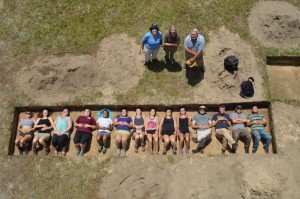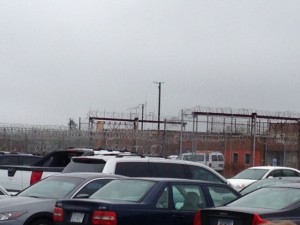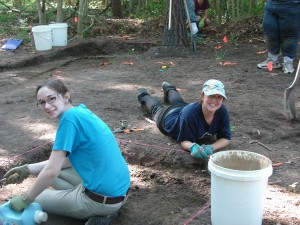http://today.cofc.edu/2014/12/17/reba-parker-defines-peace-v/
Around the holidays, the idea of peace on Earth repeated throughout Christmas carols, holiday cards and season’s greetings is just that – an idea. To many, it’s abstract feeling that’s nice to wish for and easy to write off among more pressing priorities.

But College of Charleston Professor of Sociology Reba Parker argues that peace is something else entirely. “The first question I ask students in my Sociology of Peace class is, ‘Is peace possible?’ Most of them see peace as a noun, they think about world peace as this lofty, impossible goal. So they say no.
“Over the course of the class, though,” Parker continued, “They begin to see peace as a verb, a process that begins in a single relationship and ripples outward.”
Parker, who received her master’s in theology before becoming interested in peace studies and social justice, is an applied sociologist. This means, “I’m trying to find solutions for questions and social problems,” she explained. “When it comes to peace studies, I’m looking at strategic ways a culture can begin the process of peace. At the micro level, this happens with individuals and families. It transcends to the local level and then ultimately to a global level.”
Her Sociology of Peace classes touch on all three levels, beginning with interpersonal communication tactics that can reduce violence in one-on-one or family relationships at the micro level. Her students snowball into the global level by looking at public policies, environmental concerns and organizations, violent crime rates and other factors measured on the Global Peace Index – a scale that quantifies peace in 162 countries by analyzing 22 components.
But it’s at the local level that Parker’s students can shine. In the time she’s taught 35-or-so courses at the College, Parker and her students have engaged with local schools to teach and celebrate peace, and they have planted more than 20 peace poles in Charleston’s public spaces.

“A peace pole is an eight-foot-tall, four-sided pole that’s planted three feet in the ground. It says, “May peace prevail on earth” in four languages (one on each side),” Parker said. “We planted the first peace pole, with permission from Mayor Joe Riley, at Brittlebank Park, and we’ve planted them at Sanders Clyde and James Simons elementary schools.”
The poles are more than a small-scale art installation. Parker contends they serve two purposes – to remind passersby that peace is possible, and to incorporate a global awareness into their lives.
“For example, at James Simons Elementary we put the pole in a parking circle that parents drive
around as the pick up and drop off their kids for school,” Parker said. “So, parents might be arguing in the car or something, and when they see the peace pole they’re reminded to think about how they communicate, to be more peaceful. For the children, it’s a sign that they’re entering a peaceful place.”
In Sociology of Peace, Parker’s students are reminded that many primary students across the U.S. and the world don’t have the luxury of feeling safe in their schools. In the face of the many violent attacks, conflicts and atrocities 2014 witnessed, Parker notes that many people feel skeptical about peace.

“It’s hard to look at the world and think an end to the violence is possible,” Parker said. “But you see change, and the demand for change, at a grassroots level in the form of protests and movements like the Arab Spring and Occupy Wall Street. That’s a good sign. Change is a catalyst for peace.”
Parker believes that the fact that peace itself is changeable and moveable helps people to better grasp that it can be realized. She references the Global Peace Index, saying, “You can actually see if a country is moving up or down the scale. For instance, if you look at Germany, which was once one of the most war-prone countries in the world, it’s now ranked the 17th-most peaceful country. Watching these rankings change and understanding how peace is measured makes it a more accessible process”
Parker credits strategic planning for the positive movements among once-violent countries like Germany and Japan. “There are strategies for peace just like there are strategies for war,” she said.
Those strategies, many of which are implemented by Canada (ranked 10th on the Index to the U.S.’ 101), include minimizing the gap between the wealthy and the poor, working toward environmental protection and sustainable energy, providing benefits like healthcare and paid maternity leave across the board, and healthy relationships with neighboring countries.
As Sociology of Peace oscillates between macro ideals and micro tactics for peace, Parker observes her students’ perspectives warming to new possibilities.
“At the end of the year I ask my students that same question – ‘Is peace possible?’ – and they all say, ‘Yes. Absolutely.’”





![“What I didn’t expect was the interaction with the people that we met. They were very nice and it was very, very hard to believe that they committed a crime. They seemed like normal people that you would talk to every day. So, it was kind of hard for me to know that they have changed but most of them are never going to get out [of prison] and that they are or they do seem like good people now but they did such bad things before that they’re kind of screwed in that they can never get out of prison. But It really changed my perspective a lot because I just totally see them as normal people and, you know, they’re not really—they’re criminals—but it definitely was not what I was expecting at all.” ~ Emma Ayers, Senior Public Health Student](https://blogs.cofc.edu/socyanth/files/2015/05/IMG_1058-1a8r2dw-300x225.jpg)








